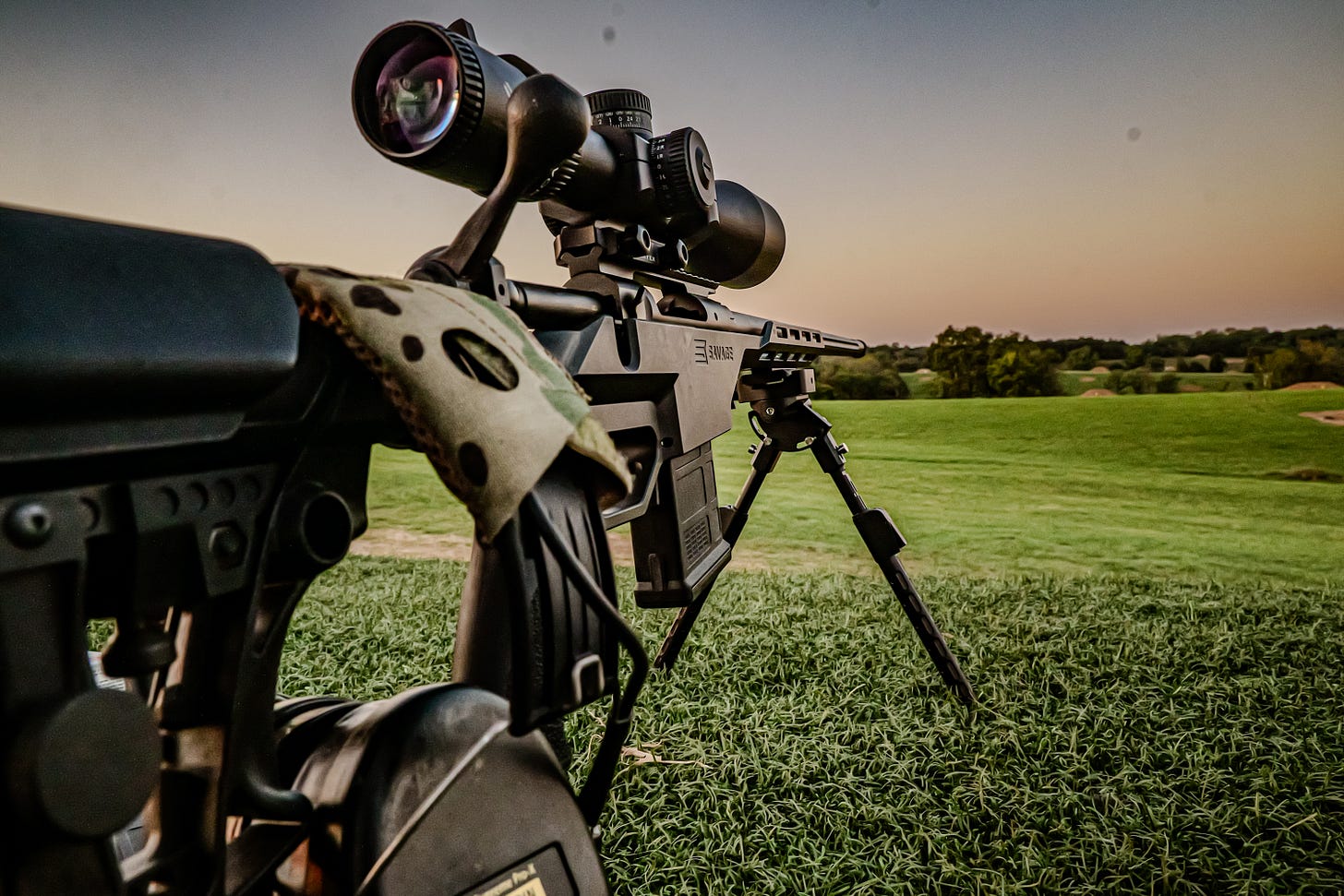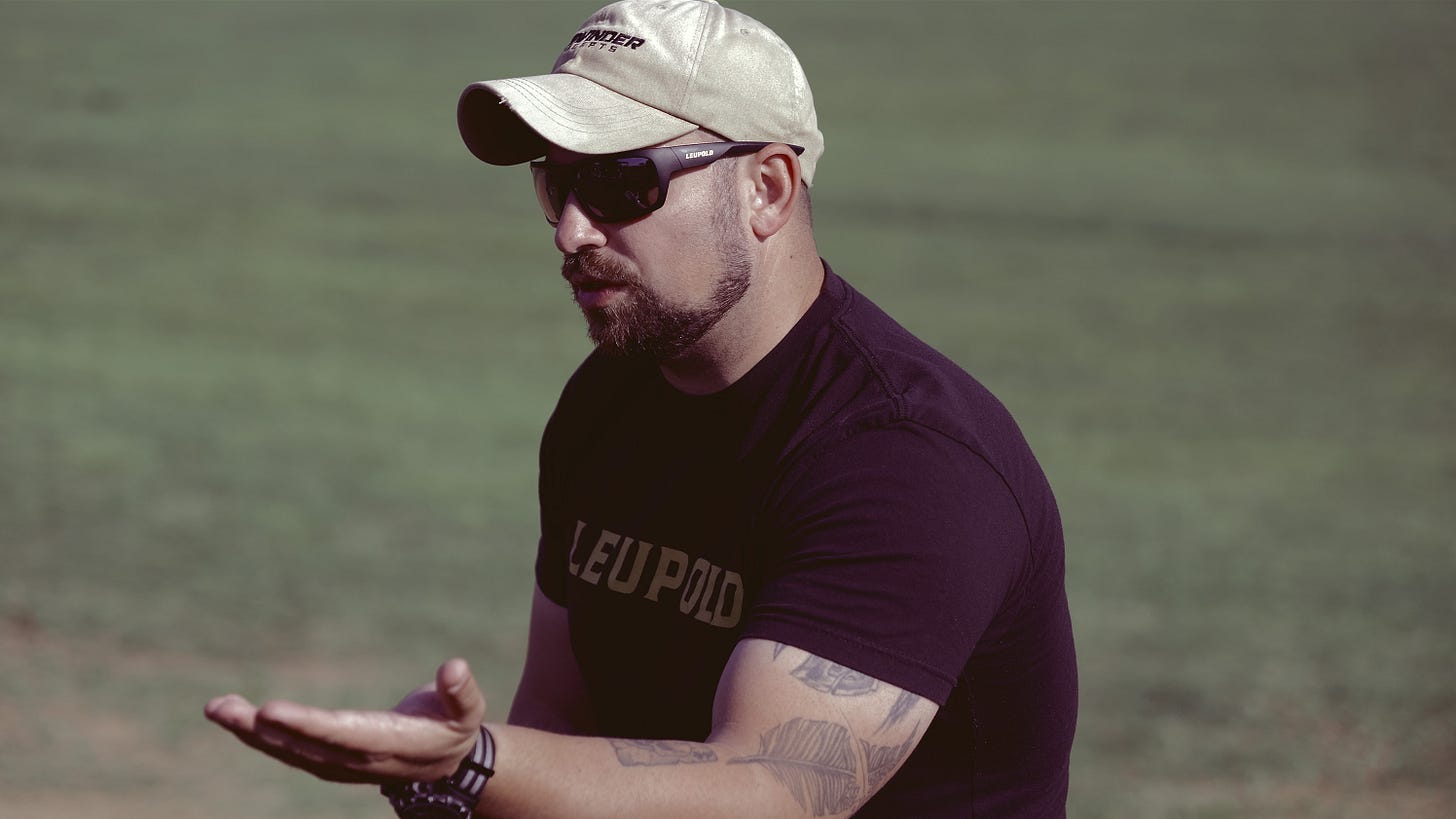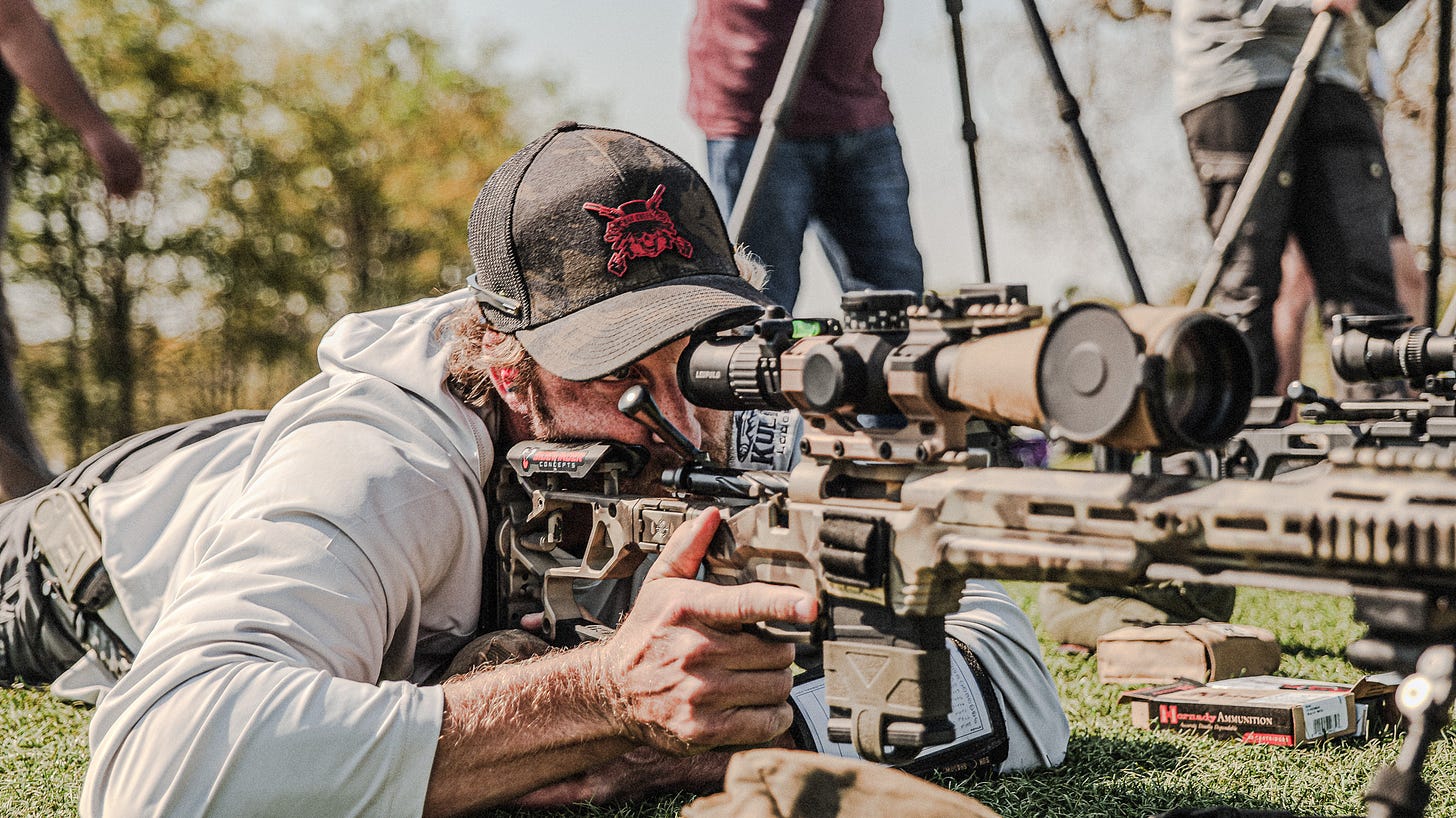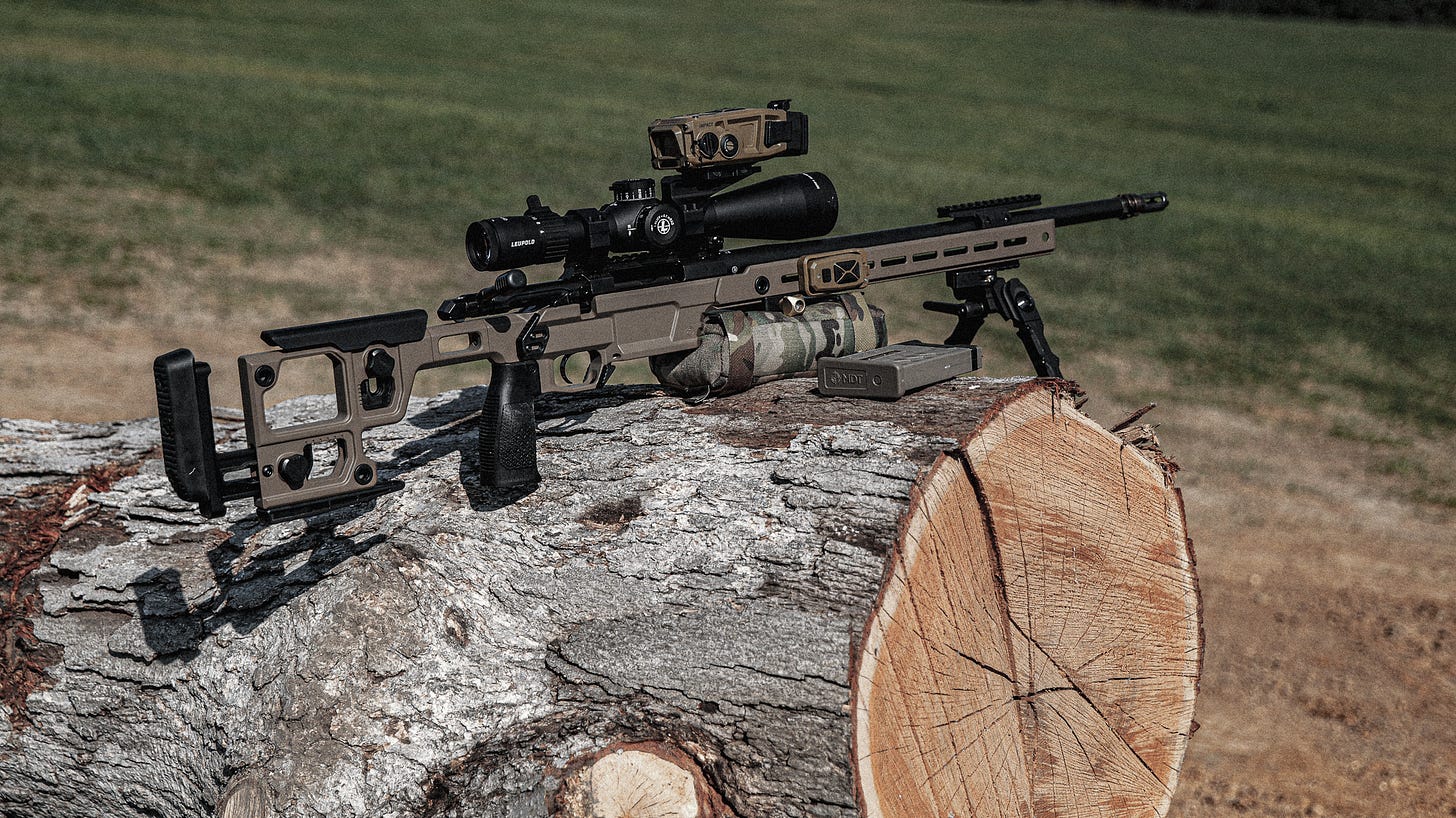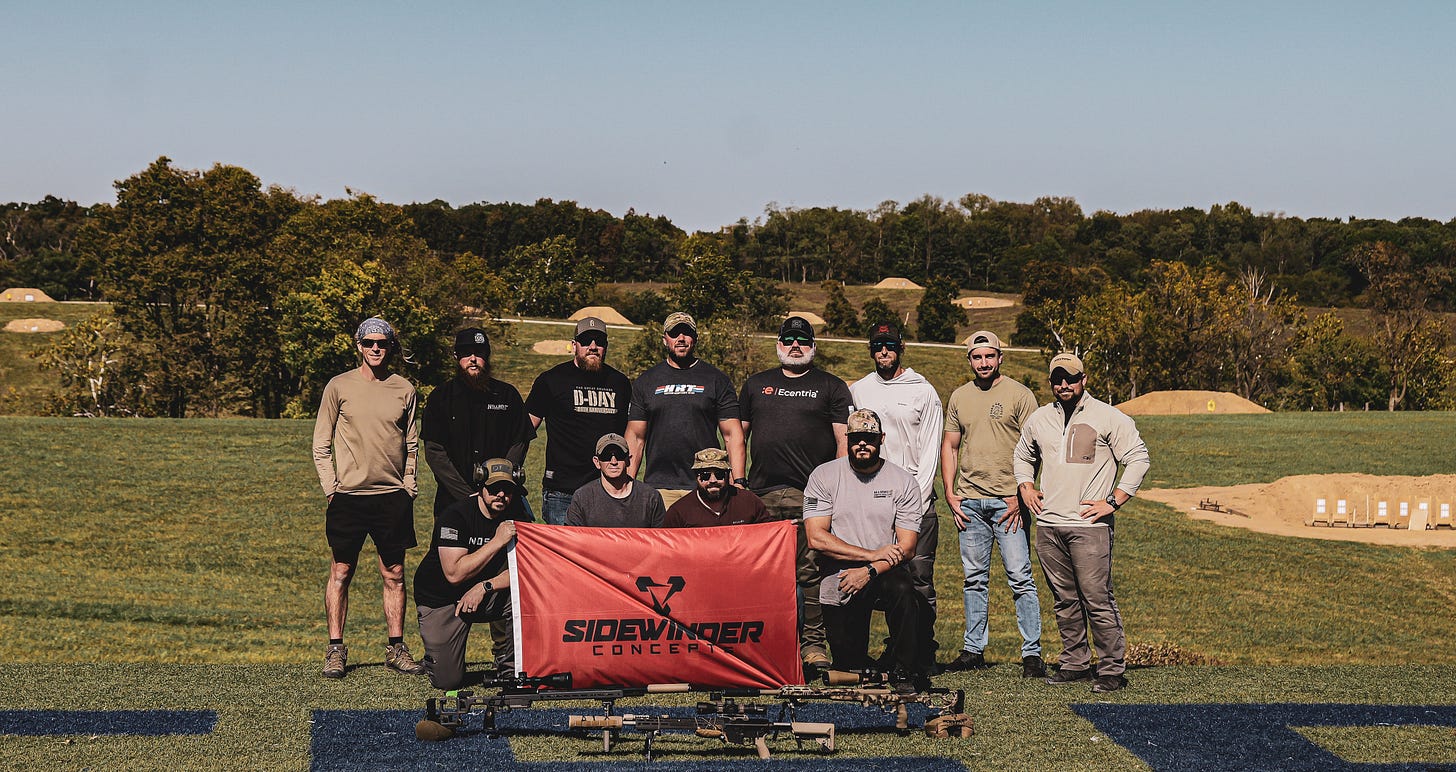CONFIDENCE. COMPOSURE. CONSISTENCY.
Inside Sidewinder Concepts’ Long Range Course: From First Trigger Press to 1,000 Yards in 48 Hours
There’s a moment—after you’ve been taught, after you've dialed your data, and after you’ve pulled the trigger—where you wait. You hold. You listen. And then, from half a mile away, you hear it:
“IMPACT.”
That’s not just a sound. It’s a shift. A breakthrough. A moment where everything comes together—and suddenly, you realize you’re capable of far more than you thought.
That’s exactly what Sidewinder Concepts, founded and led by Adrian Leatherman, delivers in its two-day long range course. Adrian isn’t a YouTube instructor or a tacticool cosplayer. He’s a U.S. Army Sniper, graduate of the Special Forces Sniper Course Level II, Airborne qualified, and recon-trained. In other words, he’s the guy real-world shooters train with when they want to stop pretending—and start performing.
The Two-Day Blueprint: Classroom to 1,000 Yards and Beyond
This course isn’t about showing up and mag-dumping at long steel. It’s a structured 48-hour progression that turns educated civilians into true marksmen—no matter their starting point.
DAY ONE: From Classroom to Confirmed Impact
The day starts in the classroom. Not just a few hours. It’s a full day of technical instruction—and it's outstanding. Adrian breaks down everything from scope theory to external ballistics, wind behavior to mirage reading, bullet stability to truing data—and he does it all in a way that actually makes sense.
One of the most overlooked aspects of long-range accuracy is rifle fitment. Adrian teaches you how to make any rifle your rifle. From cheek weld to length of pull to eye relief, every component of your setup is addressed and dialed in.
For full transparency, I showed up with a borrowed rifle. Because I’m not about to build a budget rifle “just to get by.” I’d rather run something solid—and that’s exactly what I did. (Spoiler alert: my own precision build is underway. More on that in another article.)
Zeroing and True-ing: The Foundation of Precision
Once you’re set up, you hit the range. First, you zero the rifle at 100 yards. Then you true the rifle—confirming that your rifle, ammo, and environmental data are behaving exactly how your ballistic calculator says they should.
This is where Sidewinder separates itself from 90% of other classes. You’re not just taking someone’s word for it. You’re verifying, adjusting, and logging the truth.
Stretching Out: The Challenge of Distance and Wind
After confirmation, the fun begins. You start stretching out to varying distances. The range was pure Midwest—rolling hills, low cover, shifting wind that turns out past 600 meters. It was gorgeous. And challenging. Which is exactly what you want when you’re training to be reliable, not lucky.
And then we heard it:
“Alright, let’s go to 1,000.”
It got quiet. Focused. Each shooter stepped up. Spotters called wind. Corrections were made. Triggers were pressed.
“IMPACT.”
I nailed it on my third round. And let me tell you—there’s no video game, no steel target at the local range, and no YouTube tutorial that gives you that same sense of satisfaction. I checked a lifelong goal off my list that day. And it was earned.
Night Shoot: The Part They Don’t Tell You About
After a long day, we broke for supper and waited for the sun to set. And yes—you’re shooting at night. Not with NVGs. Not with thermal. Adrian provides the lighting. You bring the skills.
We got back behind our rifles, confirmed our data under the stars, and pushed back out to 1,000 again. I scored four solid hits at night. It was surreal. The kind of fun that only gun people understand—and the kind of capability you can’t fake.
We ended with a 500-yard volley fire with all 18 students on the line. Steel rang out like a chorus of freedom. It was loud, fast, chaotic—and absolutely awesome.
Day One was a wrap. But we weren’t done.
DAY TWO: Movement, Tactics, and Thinking on the Rifle
Day Two is where it gets practical.
Adrian teaches you alternative shooting positions—and more importantly, how to build stability from each one. You learn how to shoot from:
Tripods
Barricades
Seated and standing positions
He connects the dots between your body and the shot, showing you key checkpoints so you can self-analyze and correct without needing someone to walk you through it every time.
Then comes spotting and hold calls. You partner with other shooters and learn to read shots, call adjustments, and communicate like a sniper team. It’s a skill most civilians never develop—but it’s absolutely essential if you ever find yourself operating in pairs.
Final Block: Testing Rifles, Dialing Data, and Gear Nerd Heaven
The afternoon is open. Some students use it to refine data. Others to confirm holds. Others—well, let’s just say it’s the “let me try your gun” portion of the day.
Huge shoutout to my buddy Mike Mills from Tactical Considerations, who gave input, insight, and helped a lot of shooters get the most from their setups.
One student brought a 6mm ARC that blew my mind. I got behind it, and all I can say is—holy crap. That round is a laser beam. We’ll be testing one soon for Shield Arms, and a full review is on the way. Stay tuned.
Why This Course Works—Even if You’ve Never Shot Long-Range Before
This class works because it teaches you to think—not just to shoot. You walk away with:
Real-world zeroing and truing skills
Functional understanding of ballistics and wind
A process to spot, adjust, and refine
Confidence in day and night shooting
Capability with tripods, barricades, and positional stability
The power to teach yourself going forward
It doesn’t matter if you’re brand new or already competent. You will grow. Period.
Train With a Warrior, Not a Salesman
Adrian Leatherman has the background to teach this right:
U.S. Army veteran
Army Sniper School
Special Forces Sniper Course Level II (SFSC II)
Recon courses + Airborne qualified
He’s walked the walk—and now he’s teaching everyday Americans how to shoot like warriors.
Final Word: Long-Range Shooting Isn’t About Distance. It’s About Structure.
At first glance, shooting long range looks like a magic trick. A man lies in the dirt, twists some dials, and hits a target 1,000 yards away. But there’s nothing mystical about it.
It’s math.
It’s physics.
It’s discipline, structure, and process.
You learn how to build a stable platform, how to gather data, how to test assumptions, and how to correct when you're wrong. You learn that success isn’t based on hype or emotion—it’s based on repeatable mechanics.
Whether you’re interested in competition, hunting, preparedness, or just becoming a more capable version of yourself—this is a skill worth learning.
It teaches you more than just how to shoot. It teaches you how to think.
And Sidewinder Concepts is one of the best places in the country to start that journey.
Check out Sidewinder Concepts:


